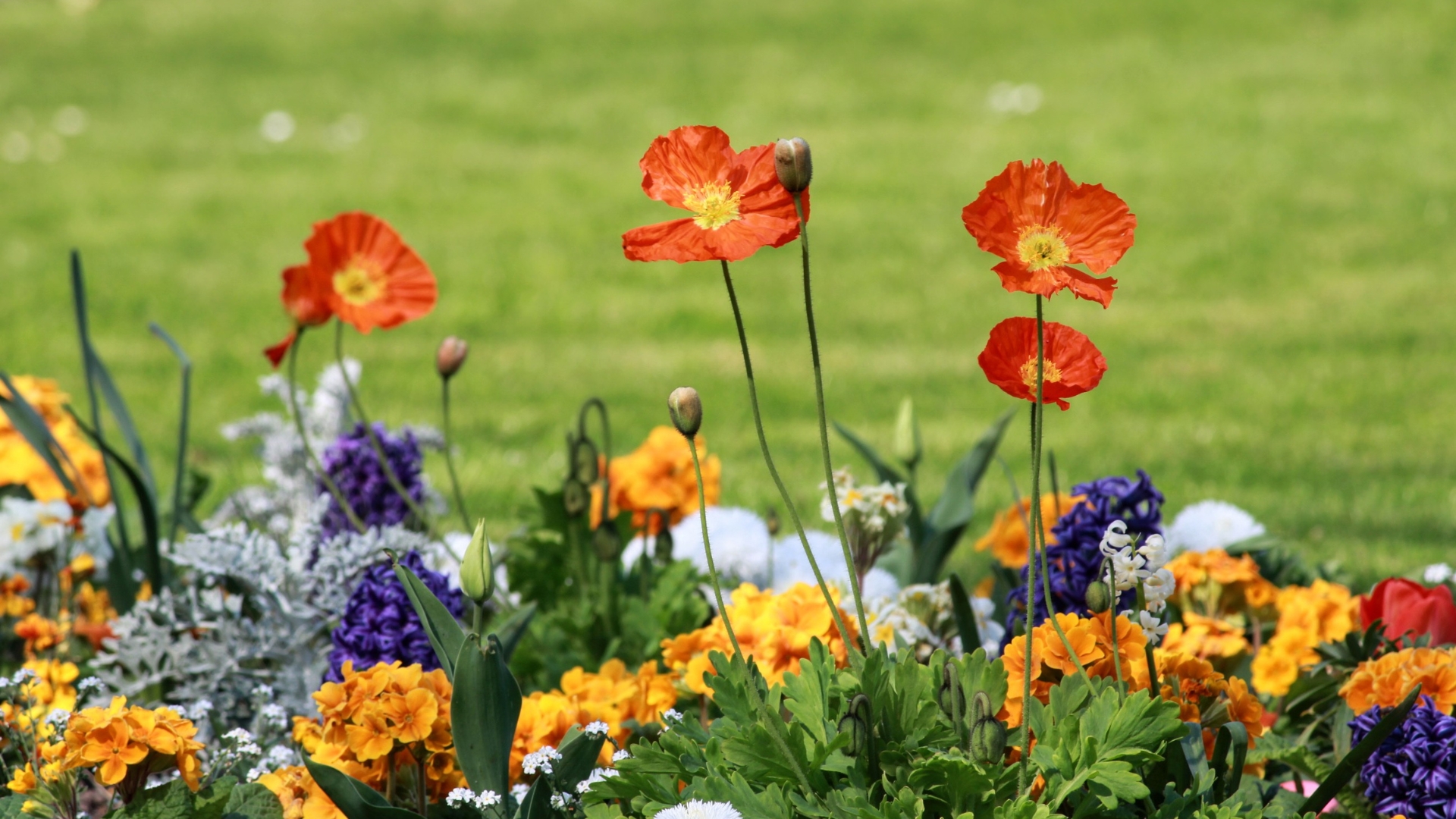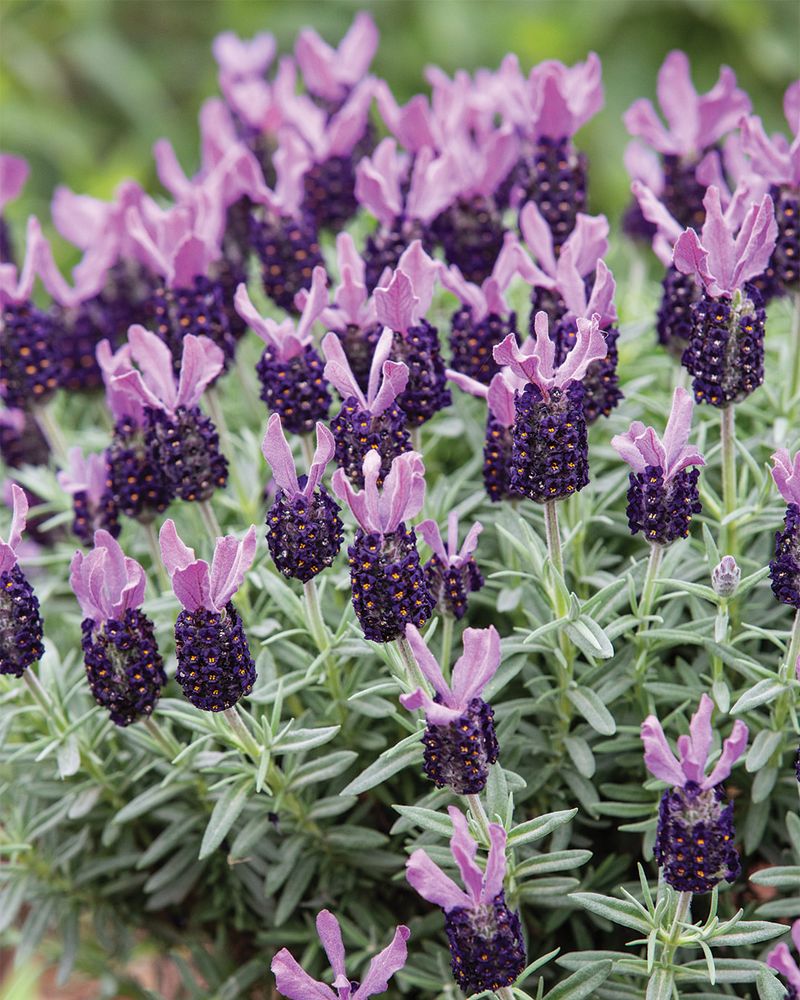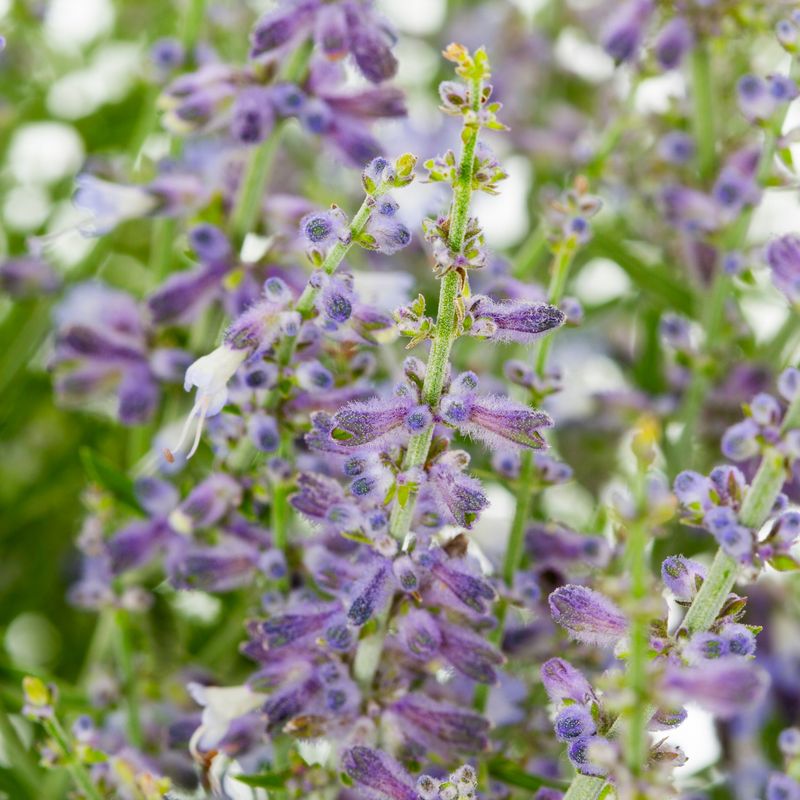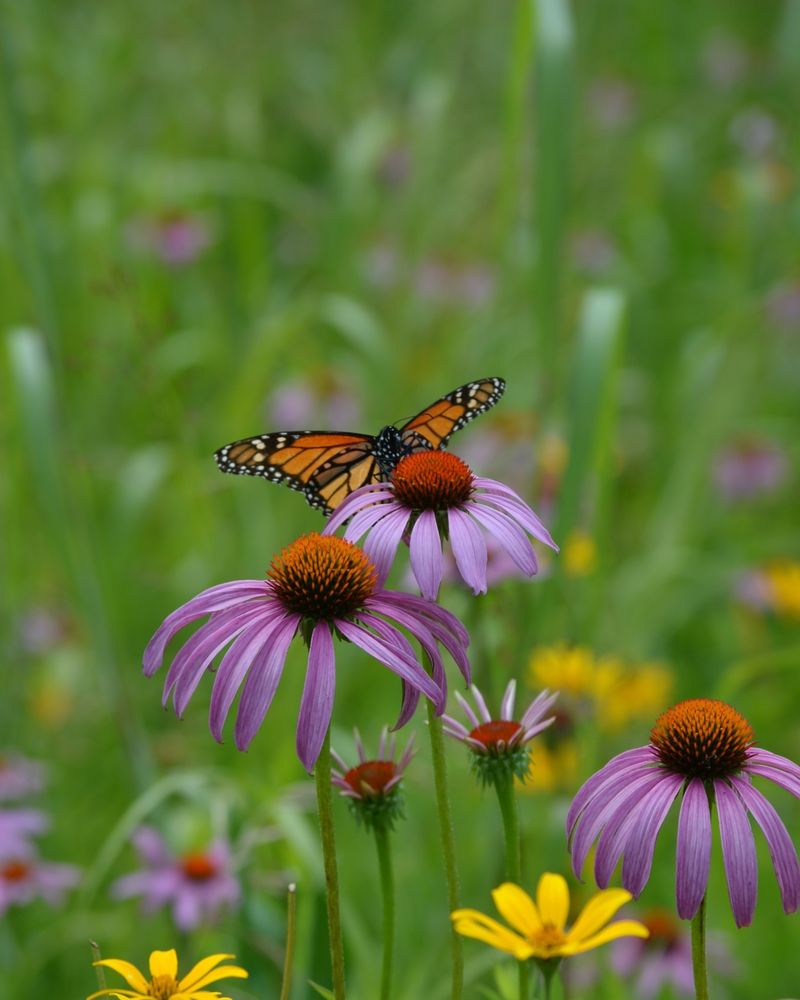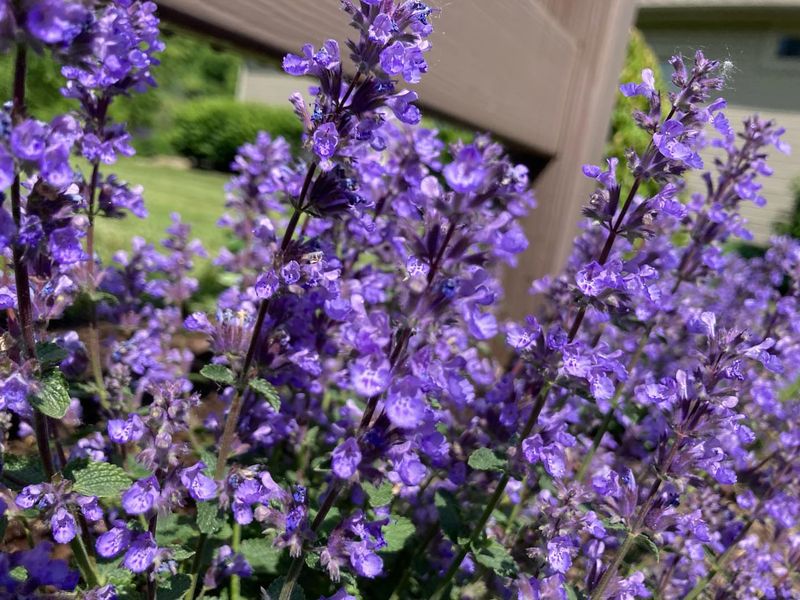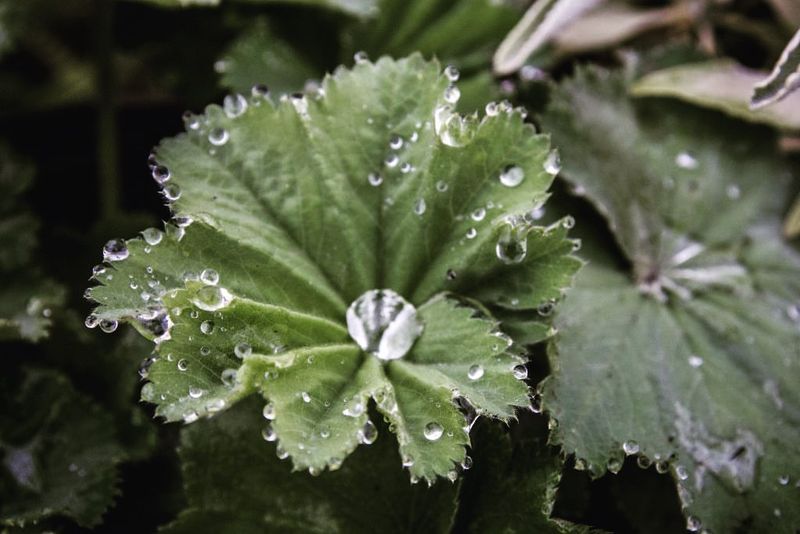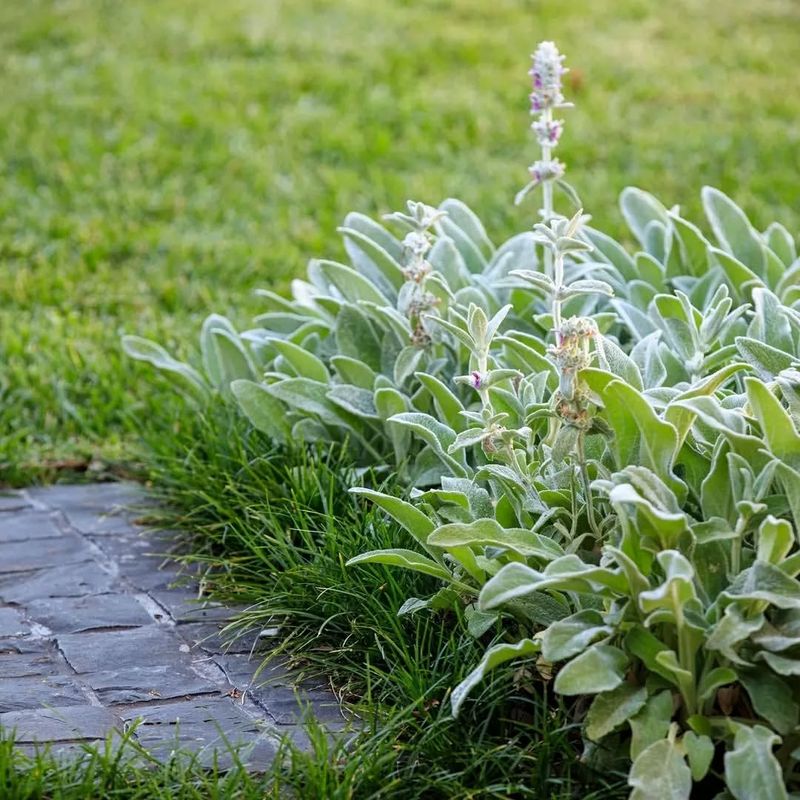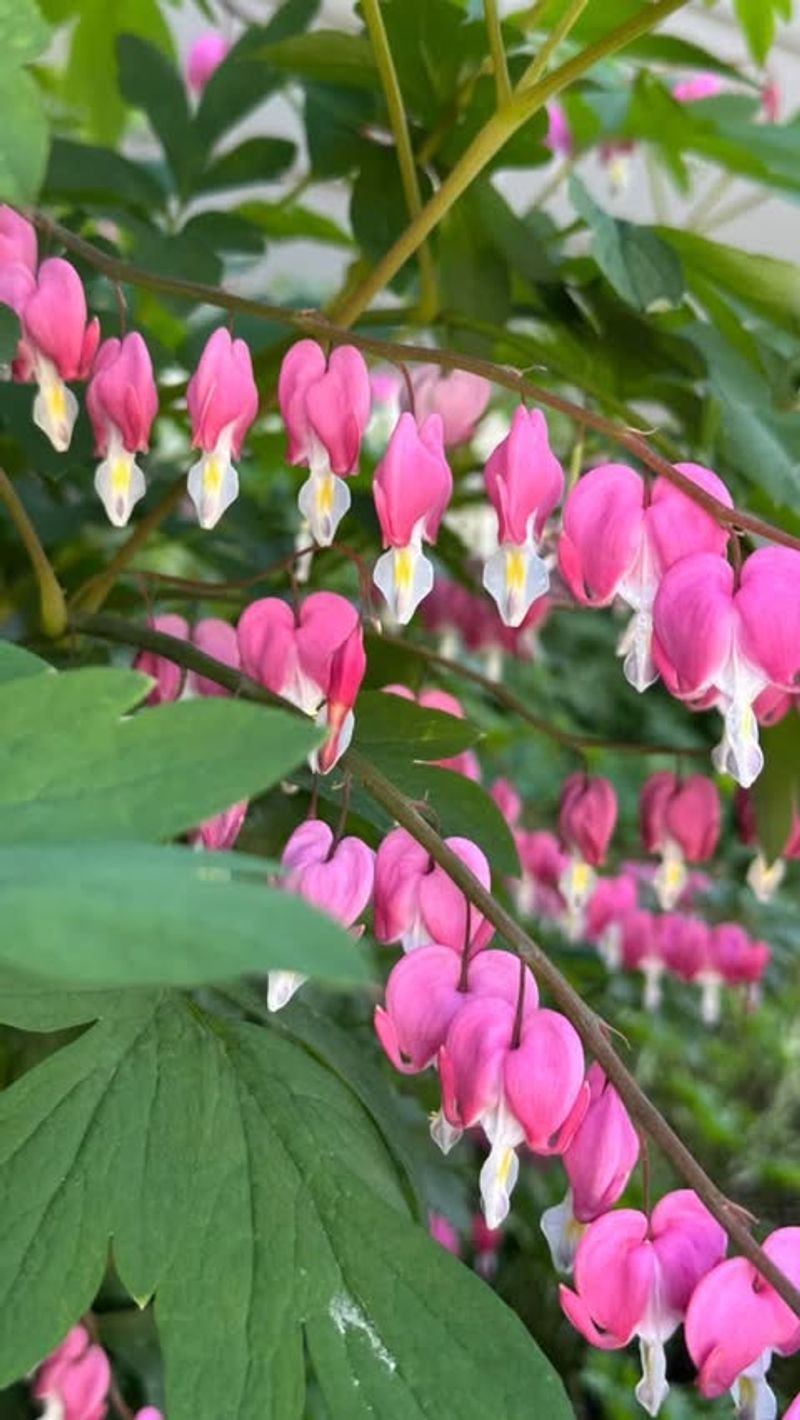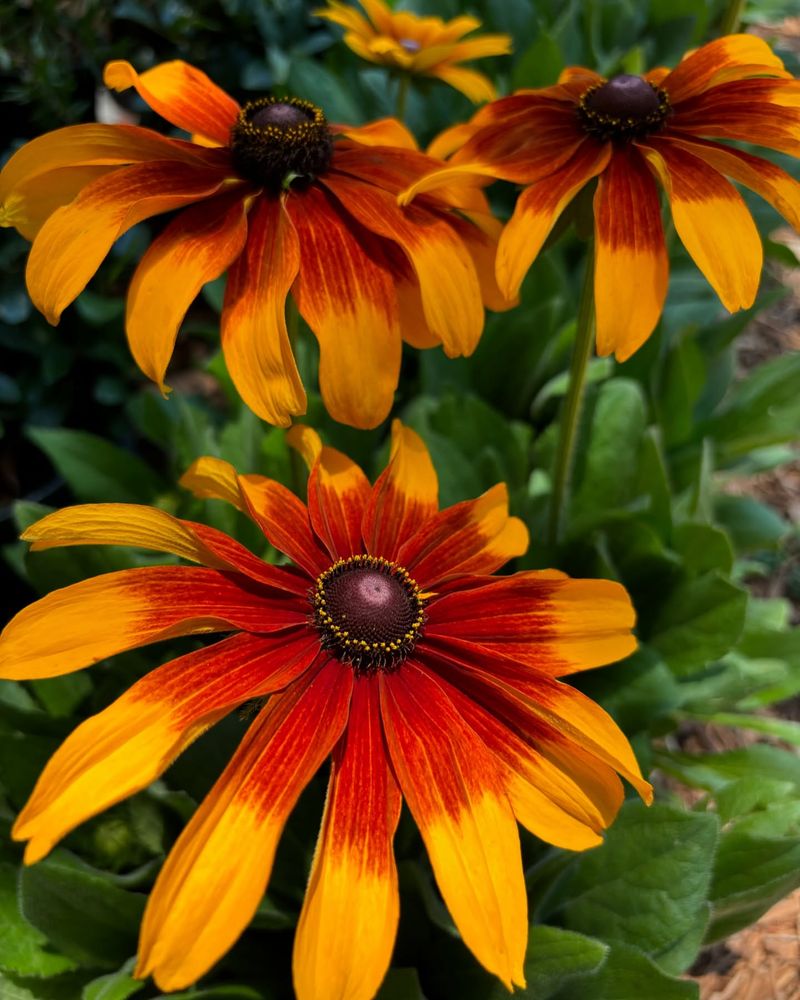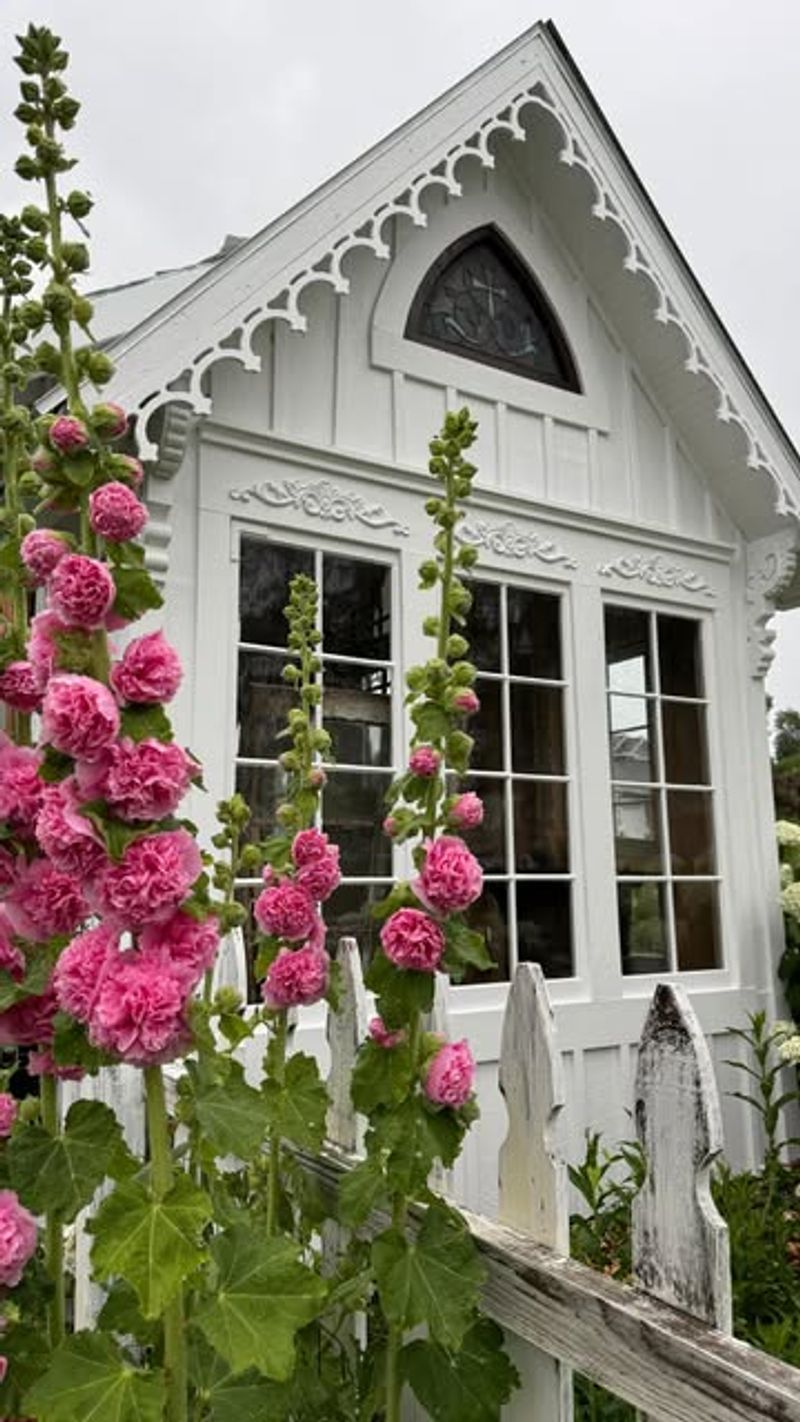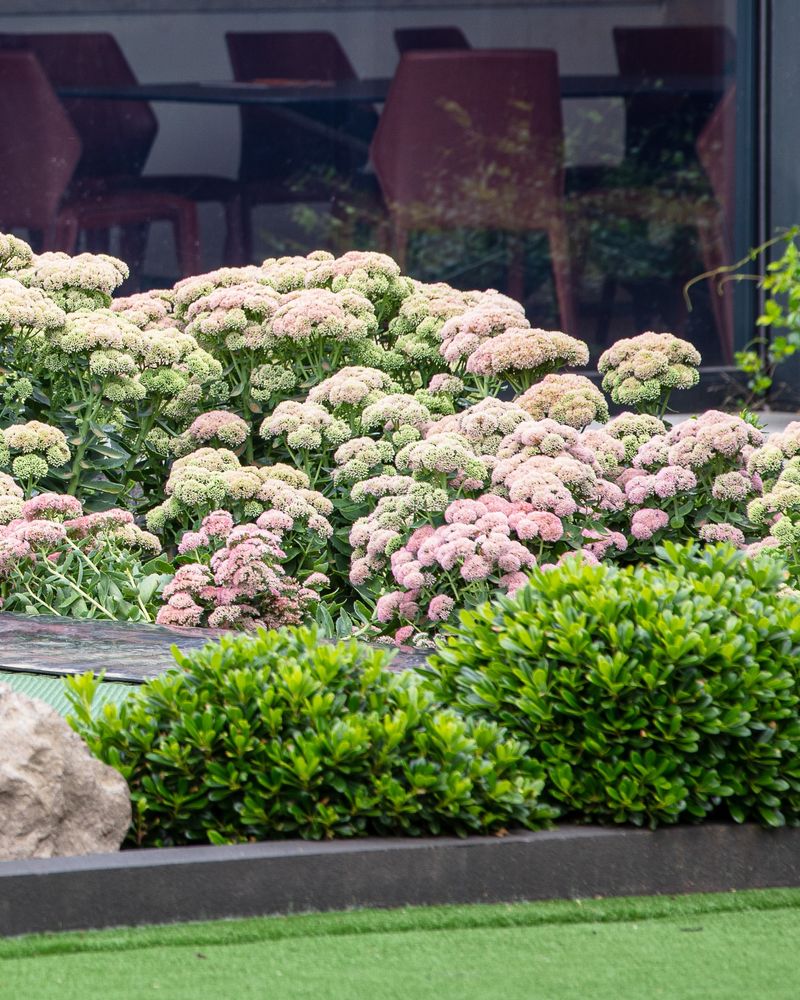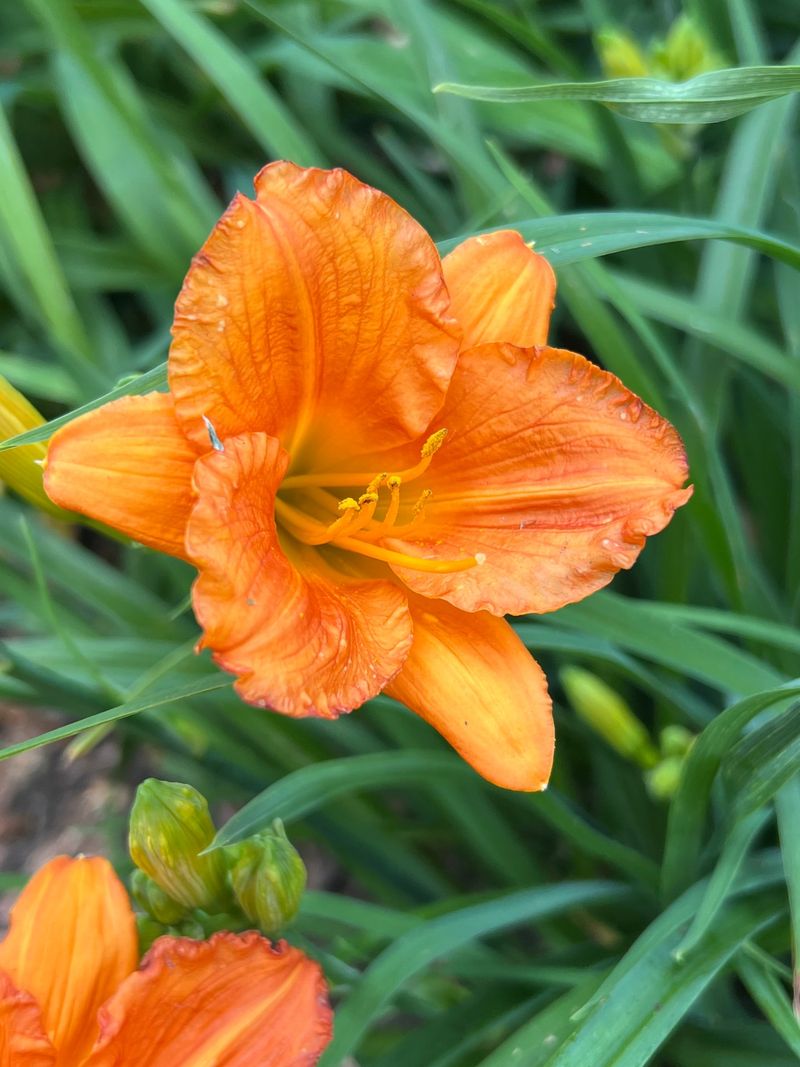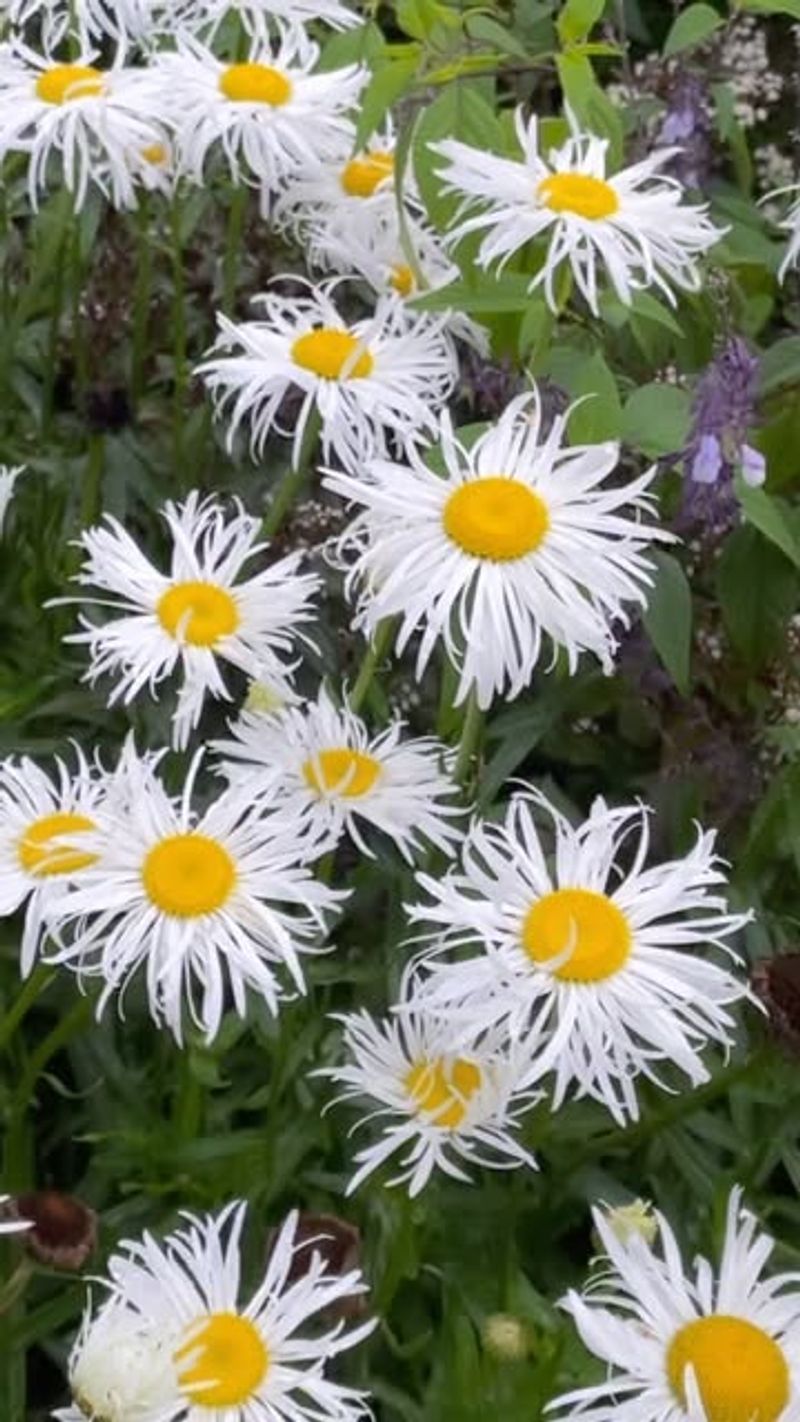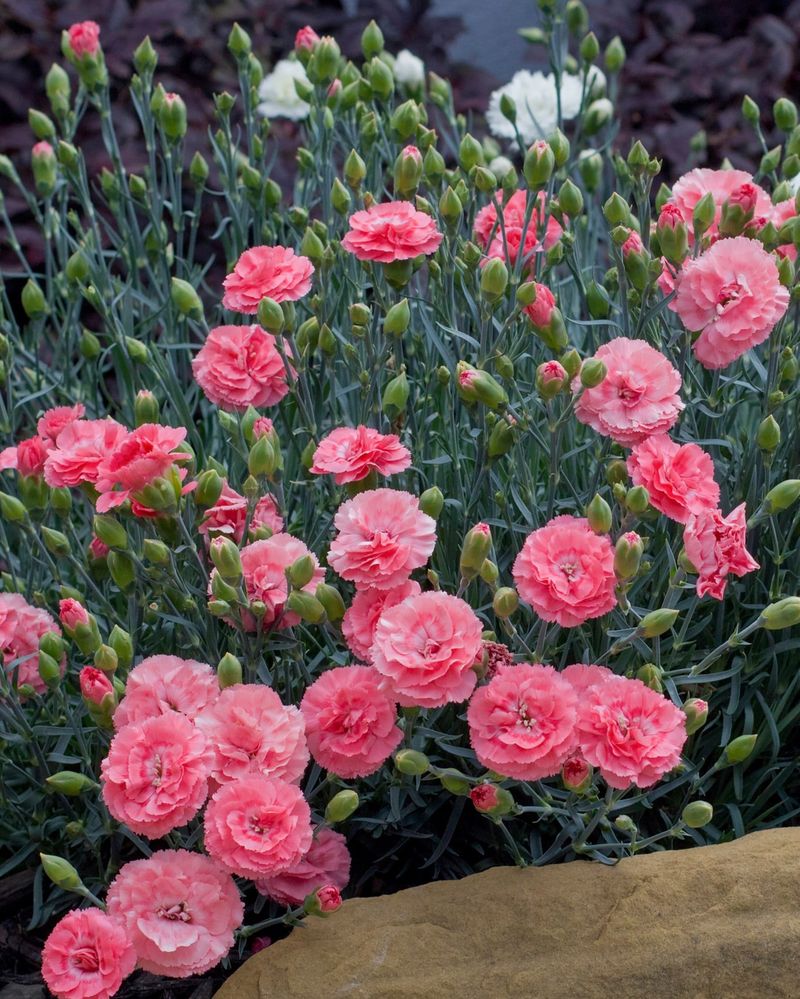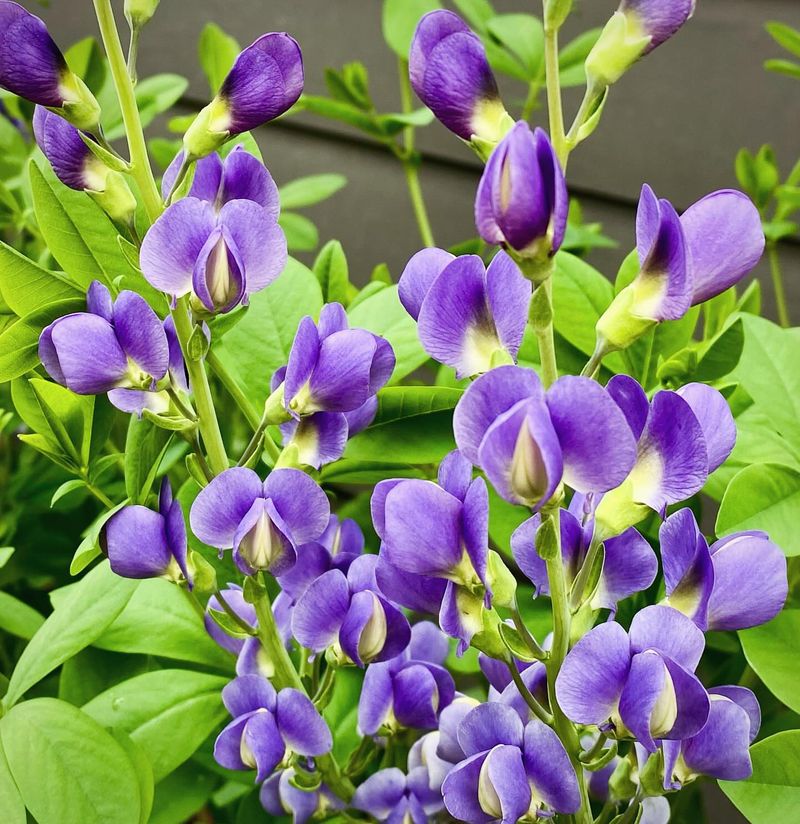Cottage gardens may look effortlessly romantic, but anyone who’s grown one knows they can be high-maintenance—unless you pick the right plants. After a few trial-and-error seasons, I found the secret: low-fuss perennials and self-seeders that come back strong year after year.
These 20 cottage garden favorites practically care for themselves, giving you lush color, wild charm, and that storybook feel—without the constant upkeep. Plant them once, and let the garden magic take it from there.
1. Lavender: The Aromatic Sentinel
Silvery-green foliage topped with purple spikes creates an instant cottage garden feel while requiring almost zero maintenance. Lavender thrives in poor soil and actually prefers to be left alone once established.
Simply plant in a sunny spot with well-drained soil, and you’ll enjoy years of fragrant blooms that attract butterflies and bees. Give it a light trim after flowering to maintain its shape.
French, English, and Spanish varieties each offer unique characteristics, so you can choose the perfect lavender for your climate zone.
2. Yarrow: The Drought-Defying Beauty
Yarrow’s flat-topped flower clusters create a delicate, lacy appearance that softens garden edges beautifully. Once established, this tough-as-nails perennial laughs at drought and poor soil conditions that would kill lesser plants.
Available in shades from classic white to vibrant yellow, pink, and red, yarrow adds months of color with zero fussing. Butterflies flock to its nectar-rich blooms while deer and rabbits leave it completely alone.
Cut spent flowers for an even longer blooming season or leave them standing for winter interest.
3. Peony: The Centenarian Showstopper
Grandmother’s favorite for good reason! Peonies can literally outlive their gardeners, thriving for 50-100 years with virtually no care. Their massive, fragrant blooms create dramatic early summer impact that defines cottage garden style.
Plant these long-lived perennials in a sunny spot with good drainage, making sure not to bury the eyes (growth buds) too deeply. The only maintenance might be a simple support cage to prevent heavy blooms from flopping after rain.
Herbaceous varieties die back completely in winter, while tree peonies develop woody stems that remain year-round.
4. Russian Sage: The Silver Cloud
Clouds of tiny purple-blue flowers hover above silvery foliage, creating a dreamy, ethereal effect from midsummer through fall. Russian sage stands tall through heat, drought, and poor soil that would wilt other perennials.
The aromatic foliage naturally repels deer and pests, eliminating the need for sprays or protective measures. Plant it alongside roses or in groups of three for maximum impact in your cottage garden design.
A quick spring cutback is all the maintenance required for years of carefree, pollinator-friendly blooms that sway gracefully in the breeze.
5. Coneflower: The Prairie Powerhouse
Native prairie toughness meets cottage garden charm in these daisy-like perennials that bloom for months without deadheading. Coneflowers attract goldfinches who perch acrobatically on the seedheads, adding movement and life to your garden.
Modern varieties expand beyond the classic purple to include white, yellow, orange, red, and even green blooms. Their deep taproots make them incredibly drought-resistant once established.
Leave the seedheads standing through winter for natural bird feeding stations and striking silhouettes against snow or frost.
6. Catmint: The Cat’s Meow
Waves of lavender-blue flowers appear in spring and continue through fall if you give this easy-care perennial a quick midsummer trim. Catmint’s aromatic gray-green foliage remains attractive even when not in bloom, forming neat mounds that suppress weeds naturally.
Newer varieties like ‘Walker’s Low’ and ‘Neptune’ stay compact without flopping, eliminating the need for staking. Deer, rabbits, and most pests avoid this plant entirely, while bees and butterflies flock to its nectar-rich blooms.
Plant catmint along pathways where brushing against the leaves releases their pleasant minty fragrance.
7. Foxglove: The Woodland Spire
Dramatic spires of tubular flowers rise above rosettes of fuzzy leaves, creating vertical excitement in partly shaded garden spots. Foxgloves self-seed enthusiastically, establishing sustainable colonies that return year after year with zero effort.
Bumblebees disappear completely into the spotted throats of these bell-shaped blooms, providing delightful garden entertainment. While technically biennial, their generous self-seeding means you’ll always have plants at different stages of growth.
For a true cottage look, allow foxgloves to place themselves naturally throughout your garden’s shadier corners.
8. Lady’s Mantle: The Dew Catcher
Scalloped, velvety leaves capture morning dew like diamonds, creating magical garden moments that change with the light. Lady’s mantle’s chartreuse flower clouds hover above the foliage in early summer, adding a frothy, ethereal quality to garden edges.
This unfussy perennial thrives in part shade but tolerates full sun in cooler climates. Its compact habit makes it perfect for softening hard edges along paths or between stepping stones.
Once established, lady’s mantle needs virtually nothing from you except appreciation for its subtle beauty and perhaps occasional dividing every few years.
9. Lamb’s Ears: The Tactile Treasure
Velvety silver leaves beg to be touched, making lamb’s ears a sensory delight in any cottage garden. Their soft, fuzzy texture creates beautiful contrast against other plants and actually repels deer and rabbits who dislike the woolly feel.
Drought-tolerant and happy in poor soil, lamb’s ears thrive where many other plants struggle. Some varieties produce purple flower spikes in summer, while others, like ‘Silver Carpet,’ focus entirely on beautiful foliage.
Plant them along pathways where visitors can’t resist reaching down for a gentle stroke of their incredibly soft leaves.
10. Bleeding Heart: The Romantic’s Choice
Heart-shaped blooms dangle from arching stems in spring, creating the quintessential cottage garden look with zero effort. Traditional bleeding hearts go dormant in summer heat, perfectly timed for later-blooming perennials to take center stage.
Modern varieties like ‘Luxuriant’ offer longer bloom times and more heat tolerance. All types prefer dappled shade and consistent moisture but require no deadheading or special treatment.
Their ferny foliage emerges early, providing welcome green when the garden is just waking up from winter slumber.
11. Black-eyed Susan: The Cheerful Charmer
Golden daisies with dark centers bloom for months, bringing sunshine to even the most neglected garden corners. Black-eyed Susans establish quickly and spread reliably without becoming invasive, filling spaces with their bright, cheerful presence.
Native to North America, they’ve evolved to handle heat, humidity, poor soil, and drought with remarkable resilience. Butterflies and beneficial insects flock to their pollen-rich centers throughout the long blooming season.
For maximum impact, plant these prairie natives in drifts where they can form natural-looking colonies that suppress weeds naturally.
12. Hollyhock: The Cottage Classic
Soaring flower stalks reach for the sky, creating the vertical drama that defines traditional cottage gardens. Hollyhocks self-seed generously, establishing sustainable colonies that return year after year with absolutely no effort on your part.
Single-flowered varieties attract beneficial pollinators, while doubles create a more luxurious, old-fashioned feel. Plant them against walls or fences where their towering height (up to 8 feet!) can create a dramatic backdrop for shorter plants.
For true cottage garden authenticity, allow hollyhocks to place themselves naturally throughout your garden beds.
13. Sedum ‘Autumn Joy’: The Fall Finale
Succulent blue-green foliage forms neat mounds that require zero maintenance throughout the growing season. By late summer, flat-topped flower clusters emerge in soft pink, deepening to rusty red as autumn progresses.
Incredibly drought-tolerant once established, ‘Autumn Joy’ sedum thrives in poor soil and blazing sun that would wilt lesser plants. Butterflies and bees flock to its late-season nectar when many other garden flowers have finished blooming.
Leave the dried flower heads standing through winter for architectural interest and natural bird feeding stations.
14. Daylily: The Foolproof Flowering Machine
Virtually indestructible, daylilies bloom for weeks with zero attention, even in challenging soil and weather conditions. Modern reblooming varieties like ‘Stella de Oro’ produce flowers from spring through fall, creating months of carefree color.
Their arching, strappy foliage suppresses weeds naturally and remains attractive even when not in bloom. Daylilies multiply gradually, forming larger clumps that can be divided and spread throughout your garden.
From classic golden yellows to exotic purples, reds, and bicolors, there’s a daylily to complement every cottage garden color scheme.
15. Shasta Daisy: The Pristine Performer
Classic white daisies with sunny yellow centers create that timeless cottage garden look while being remarkably low-maintenance. Shasta daisies form tidy clumps that bloom for weeks in midsummer, requiring no staking or special treatment.
Their clean, bright flowers make perfect cutting material for indoor bouquets, and removing spent blooms encourages additional flowering. Modern varieties like ‘Becky’ offer improved heat tolerance and stronger stems that resist flopping.
Plant them in groups of three or five for maximum impact in your cottage garden design.
16. Cottage Pinks: The Fragrant Frills
Spicy clove fragrance wafts from these charming perennials, whose fringed blooms appear in spring and often rebloom throughout summer. Their blue-gray foliage forms tidy mounds that remain attractive year-round in milder climates.
Despite their delicate appearance, cottage pinks (dianthus) are surprisingly drought-tolerant once established. Their compact size makes them perfect for garden edges and rock gardens where their sweet scent can be appreciated up close.
Modern varieties offer improved heat tolerance while maintaining the classic frilly flowers that have graced cottage gardens for centuries.
17. Japanese Anemone: The Graceful Finale
Ethereal flowers dance on wiry stems from late summer into fall, extending the cottage garden season when many other plants have finished blooming. Japanese anemones gradually form elegant colonies that suppress weeds and require zero deadheading.
Available in shades of pink and white, these refined perennials prefer partial shade but tolerate more sun if given consistent moisture. Their poppy-like flowers sway gracefully in the slightest breeze, adding movement to the autumn garden.
Once established, they need absolutely nothing from you except appreciation for their elegant beauty.
18. Baptisia: The Structural Standout
Lupine-like flower spikes emerge in spring above blue-green foliage that forms impressive shrub-like clumps requiring zero maintenance. Native to North American prairies, baptisia develops deep roots that make it incredibly drought-tolerant once established.
After flowering, decorative seed pods develop that add architectural interest through fall and winter. Modern varieties expand beyond the classic blue to include yellow, white, purple, and bicolor options.
Plant baptisia where it can remain undisturbed, as it resents transplanting but will thrive for decades in the same spot.
19. Cranesbill Geranium: The Tireless Spreader
Mat-forming perennial geraniums create weed-suppressing carpets of colorful blooms that thrive in sun or partial shade. Unlike their annual cousins, these tough perennials return reliably year after year, gradually spreading to fill empty spaces.
Varieties like ‘Rozanne’ bloom for months without deadheading, creating rivers of blue, pink, or purple throughout the garden. Their deeply cut foliage often develops beautiful fall color before dying back for winter.
Plant them under roses or between taller perennials where they’ll beautifully fill the middle and lower layers of your cottage garden design.
20. Veronica: The Butterfly Beacon
Spikes of tiny flowers in brilliant blue, purple, pink or white create vertical interest throughout summer with minimal care. Veronica’s tidy habit and long bloom time make it a reliable performer in cottage gardens, where it attracts scores of butterflies and pollinators.
Modern varieties like ‘First Love’ offer improved disease resistance and reblooming capability. Their compact size works perfectly in the middle of borders, where their upright flower spikes contrast beautifully with mounding and trailing plants.
A quick shearing after the first flush of blooms rewards you with a second show later in summer.

